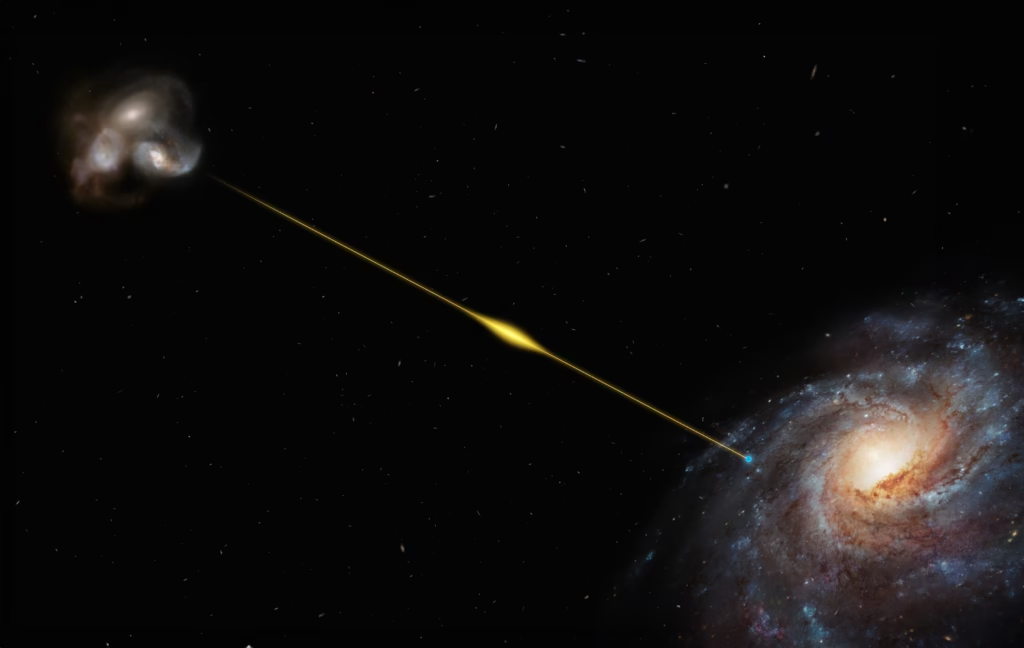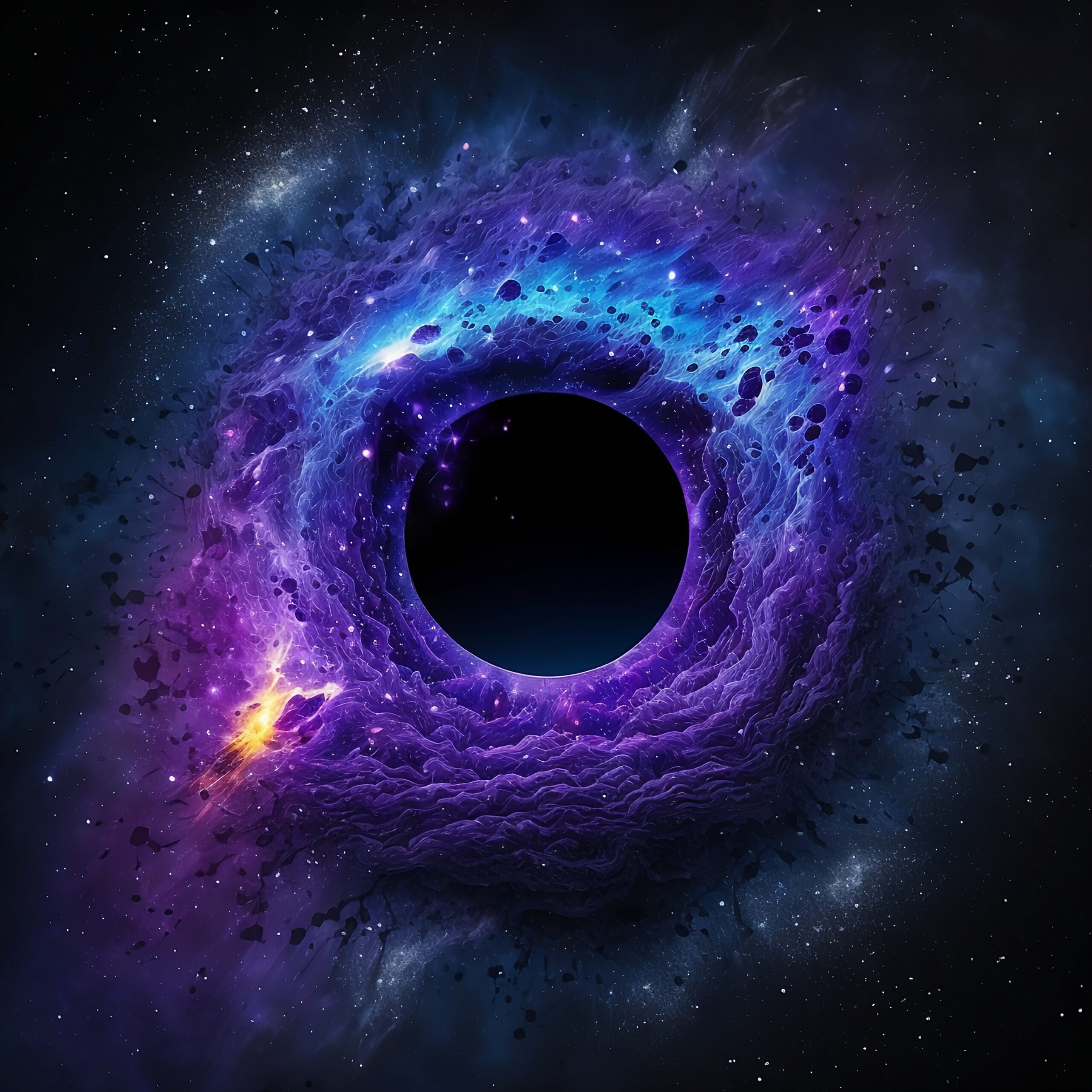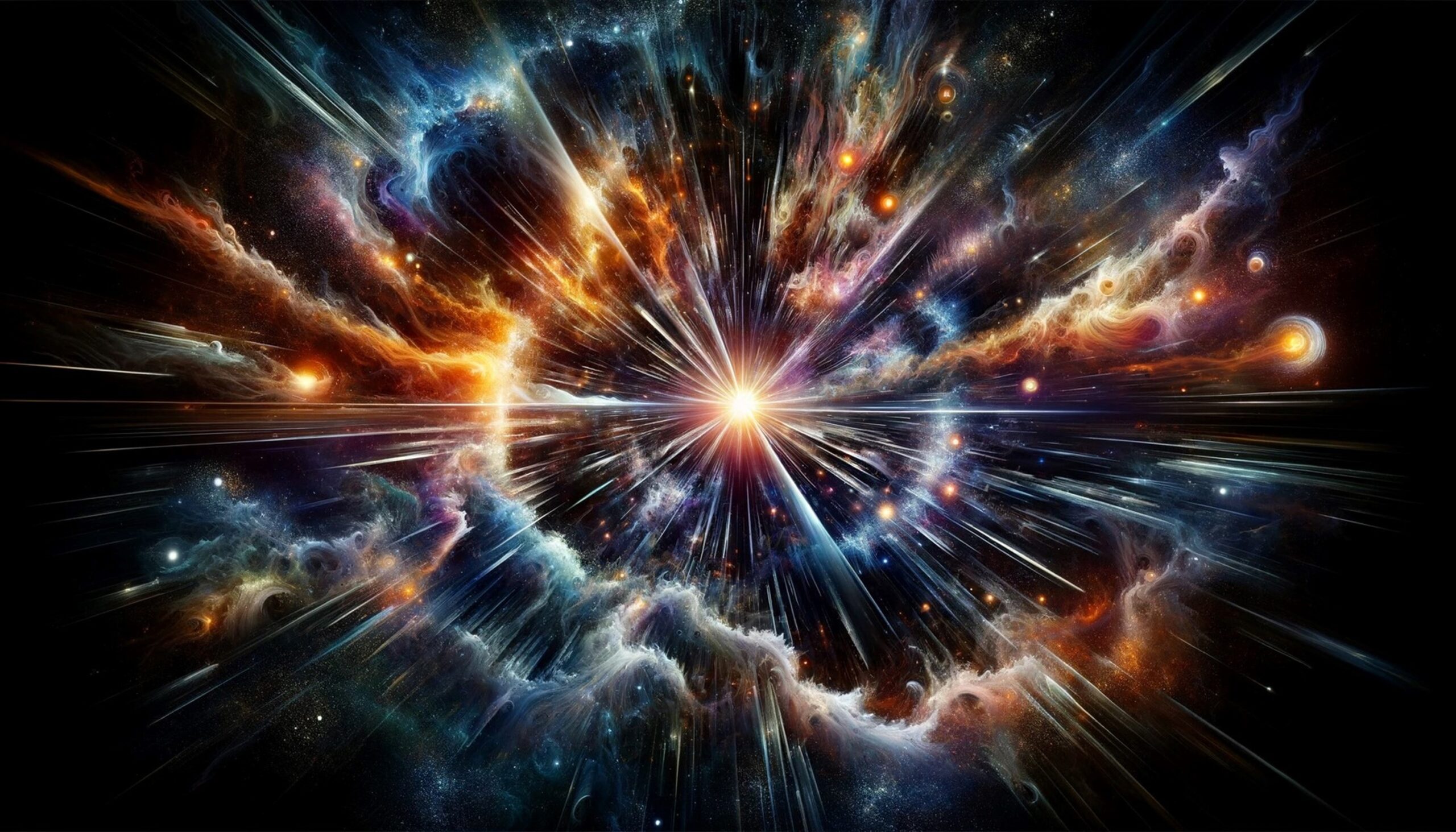Introduction
Fast Radio Bursts (FRBs) are one of space’s most interesting and mysterious things. Discovered in 2007, these super-fast and powerful bursts of radio waves come from far away in the universe. Even though they last only a few milliseconds, FRBs release as much energy as the Sun does in a whole day. On the other hand, nebulae—colorful clouds of gas and dust—are famous for creating stars and marking the end of stars’ lives. But could there be a link between these two cosmic events? Let’s take a closer look at what we know so far.
What Are Fast Radio Bursts (FRBs)?
Fast Radio Bursts (FRBs) are strong, quick flashes of radio waves that come from deep space. These bursts last just milliseconds but release as much energy as the Sun does in several days. The first FRB, the “Lorimer Burst,” was discovered in old data in 2007. Since then, astronomers have found hundreds of FRBs, which are divided into two types: one-time bursts and repeating bursts, like FRB 121102.

Page URL: https://commons.wikimedia.org/wiki/
Attribution: ESO/M. Kornmesser, CC BY 4.0 https://creativecommons.org/licenses/by/4.0, via Wikimedia Commons
The cause of FRBs is still not fully understood. Some possible explanations include magnetized neutron stars (called magnetars), interactions with black holes, or even signals from advanced alien civilizations. New research also suggests that nebulae—clouds of gas and dust—might play a role in creating or sending these mysterious signals. Still, the exact cause of FRBs remains a mystery for scientists.
What Are Nebulae?
Nebulae are huge clouds of gas and dust found all over space. They look different and serve different purposes. Some nebulae, like the Eagle Nebula, are “stellar nurseries,” where new stars are born from thick clumps of gas and dust. Others, like the Crab Nebula, are the leftovers of huge stars that exploded in supernovae.
Besides being stunning to look at, nebulae are very important for the universe. They contain key elements like hydrogen, helium, and other heavier elements, which are essential for making stars. Nebulae also spread these elements across the galaxy, helping create new stars, planets, and other space objects.
How Are Nebulae and FRBs Linked?
Recent observations suggest there may be a connection between Fast Radio Bursts (FRBs) and nebulae, showing interesting interactions between the two.
Nebulae as Signal Amplifiers: As FRBs travel through space to reach Earth, they often pass through interstellar material. Nebulae, with their thick gas, dust, and magnetic fields, might act like amplifiers or distorters of these radio waves. When FRBs pass through or near nebulae, their signals could change, giving astronomers useful information about the environment around the bursts and helping them understand more about their properties.
Origins in Stellar Catastrophes: Some FRBs are thought to come from magnetars—neutron stars with very strong magnetic fields, often created during supernova explosions. These explosions leave behind nebulae, like the Crab Nebula, which is the remains of a supernova. The link between magnetars and nebulae suggests that these regions could play a role in producing FRBs, especially in places with intense radiation and magnetic fields.
Repeating FRBs Near Nebulae: Some repeating FRBs, like FRB 121102, have been found in areas with a lot of ionized gas, a common feature of nebulae. This connection supports the idea that nebulae might affect or even cause these bursts. The ionized gas and complex magnetic fields in these areas might be important for how repeating FRBs happen.
Together, these discoveries suggest that nebulae could play a role in shaping or creating FRBs, but much is still unknown about how exactly they are connected.
Unanswered Questions
While the possible link between FRBs and nebulae offers exciting clues, it also raises several important questions that still need answers:
Are all FRBs linked to nebulae, or is this connection specific to certain cases? Not all FRBs may be connected to nebulae. While some repeating FRBs are found in regions full of gas and ionized material, other FRBs have been detected in areas with less dense space matter. This makes us wonder whether the connection between nebulae and FRBs is special to certain events or if it applies to all FRBs.
Could nebulae act as natural lenses, magnifying FRB signals? It’s still unclear if nebulae could act like natural magnifying lenses, focusing or strengthening the radio signals from FRBs. If nebulae can concentrate the energy of FRBs, it might explain why some bursts appear brighter or stronger than others, offering a new way to study these mysterious events.
What role do the magnetic fields within nebulae play in the FRB phenomenon? Nebulae often have strong magnetic fields that could interact with radio waves. It’s not yet clear how these fields might affect FRBs. Could they change the path, strength, or frequency of the bursts? Understanding how the magnetic fields in nebulae influence FRBs is key to fully understanding these signals.
These open questions show how complex FRBs and their environments are, encouraging more research into the detailed relationship between nebulae and these puzzling bursts.
Conclusion
The connection between nebulae and Fast Radio Bursts (FRBs) is still a fascinating mystery. As our scientific tools and methods improve, we’re slowly getting closer to understanding the role these brief signals play in the larger story of the universe. Are nebulae just passive observers in the creation of FRBs, or do they actively help cause these bursts? This question is still unanswered and needs more study.
The exploration of FRBs and nebulae reminds us how much we still don’t know about the universe, encouraging us to keep looking up at the stars. Every discovery brings us closer to solving the mysteries of space, and the adventure of learning is far from over.
Share the knowledge with

